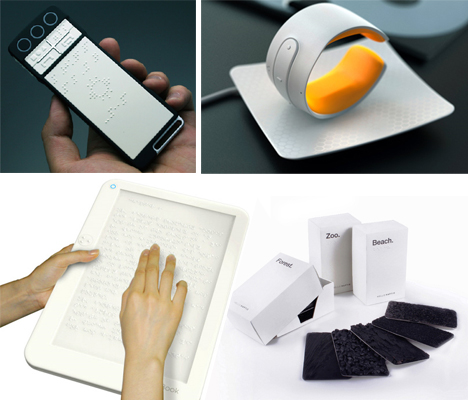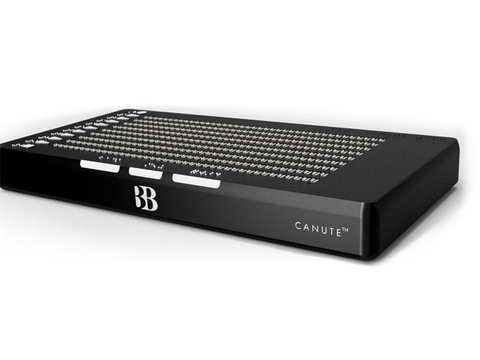Enhance Accessibility with Braille Displays and Notetakers
Enhance Accessibility with Braille Displays and Notetakers
Blog Article
A Guide to Life-Changing Assistive Modern Technology for the Blind and Visually Impaired
The innovation of assistive innovation has actually introduced a transformative era for people that are blind or visually impaired, offering devices that enhance freedom and enrich day-to-day experiences. Developments such as clever navigating devices and AI-driven applications are redefining exactly how customers connect with their environments, while accessible analysis remedies and clever home innovations guarantee to more boost the lifestyle. As these innovations proceed to progress, one must think about not just their capabilities but also their influence on promoting self-reliance and inclusivity. What does this mean for the future of availability?
Smart Navigation Tools
Smart navigation tools are transforming the way people who are blind or aesthetically impaired connect with their atmosphere. These advanced modern technologies, which integrate general practitioners, audio comments, and haptic signals, give individuals with critical details about their environments, enhancing their self-reliance and mobility.
One noticeable example is using smart walking canes geared up with sensing units that spot barriers and provide real-time comments via vibrations or audio cues. These tools enable individuals to navigate complicated settings, such as hectic roads or crowded public spaces, with increased self-confidence. Additionally, wearable gadgets, such as clever glasses, are being developed to help in identifying faces, reading text, and recognizing objects, better enhancing the customer's spatial awareness.
Additionally, clever navigating devices are significantly including fabricated knowledge to examine information and adjust to users' preferences. This individualized strategy not only improves navigation effectiveness however additionally fosters a sense of empowerment amongst customers. As technology continues to development, the possibility for wise navigation tools to develop a more obtainable and comprehensive world for individuals who are blind or aesthetically damaged stays encouraging, inevitably improving their day-to-day experiences and communications.
Innovative Mobile Apps
Mobile applications are becoming powerful devices for aiding people that are blind or aesthetically damaged, using an array of capabilities that boost daily living. These applications harness progressed innovation to assist in daily tasks, improve access, and advertise self-reliance.
One group of innovative mobile apps focuses on aesthetic acknowledgment. Applications like Be My Eyes link individuals with sighted volunteers by means of video clip calls, enabling real-time aid for jobs such as reviewing tags or navigating unknown atmospheres. Apps like Seeing AI make use of man-made knowledge to define environments, reviewed message, and identify things, providing users with important details at their fingertips.
Another substantial location is navigation and alignment. Apps such as Aira and Neighboring Explorer provide audio advice, aiding customers navigate city areas effortlessly. They use customized aid, permitting an extra positive expedition of the atmosphere.
Moreover, wellness and wellness applications satisfy certain needs, such as medicine monitoring and physical fitness monitoring. These applications aim to cultivate an alternative technique to health, making certain that customers can maintain their health and wellness separately.
Wearable Assistive Tools
Wearable assistive gadgets stand for a significant improvement in modern technology made to sustain individuals who are blind or aesthetically damaged. These gadgets enhance movement and independence by giving real-time feedback regarding the surrounding atmosphere. Amongst one of the most remarkable wearable modern technologies are clever glasses furnished with electronic cameras and sensing units, which can determine barriers and relay critical details with audio cues.

An additional ingenious option consists of wrist-worn gadgets that utilize ultrasonic waves to detect barriers and supply navigational assistance. These gadgets typically come with personalized settings, enabling users to site link customize the notifies to their specific requirements.
The integration of artificial intelligence in wearable assistive technology is also noteworthy, as it continually improves the precision and responsiveness of these tools. On the whole, wearable assistive tools are transforming the lives of the blind and visually damaged, fostering higher autonomy and boosting lifestyle with innovative options.
Easily Accessible Reading Solutions
Obtainable reading solutions play a crucial duty in allowing individuals who are blind or visually damaged to engage with message across various layouts. These options include a series of devices and innovations made to boost reading experiences, from typical print materials to electronic material.
One popular solution is Optical Personality Recognition (OPTICAL CHARACTER RECOGNITION) modern technology, which converts printed text into digital style, permitting users to pay attention to or check out the content using display viewers. In addition, specialized e-readers furnished with text-to-speech capabilities provide customizable reading experiences, making it possible for users to change font sizes and history colors for boosted exposure.
An additional efficient approach is braille display screens, which give responsive responses by transforming electronic message right into braille. This permits people to check out touch, cultivating better freedom and accessibility to literary works. Mobile applications created for reading scanned files or books can encourage individuals with instant accessibility to a vast library of materials (Braille displays and notetakers).

Smart Home Technologies
Smart home modern technologies have changed the method people who are blind or visually damaged engage with their living settings, enhancing both self-reliance and safety and security. These innovative options take advantage of automation and connectivity to develop an available space tailored to the needs of customers.
Smart audio speakers and voice-activated aides provide hands-free control over numerous tools, permitting individuals to adjust lights, protection, and temperature level measures via basic voice commands. This performance minimizes dependence on sighted support and fosters a sense of freedom. Additionally, wise lights systems can be customized to provide auditory feedback or tactile hints, allowing people to browse their homes better.
In addition, security systems furnished with clever cameras and sensors can send out real-time notifies to users, enhancing personal safety without requiring aesthetic verification. Automated door locks supply tranquility of mind, allowing customers to safeguard their homes effortlessly.
Incorporating clever home innovations not only improves everyday living yet also urges social communication with connected tools - Wearable technology for low vision. With recurring developments in assistive technology, the future shows up encouraging, as even more options will arise to further encourage individuals who are visually damaged or blind, guaranteeing an extra inclusive and independent lifestyle
Verdict
To conclude, the improvements in assistive technology for the blind and click to read aesthetically impaired stand official statement for a significant jump toward boosting self-reliance and lifestyle. Smart navigating tools, innovative mobile applications, wearable tools, easily accessible reading services, and smart home modern technologies jointly promote an inclusive environment. This integration of innovation not only enhances flexibility and day-to-day living but also empowers individuals to involve completely with their environments, advertising greater freedom and involvement in society.
Technologies such as wise navigating gadgets and AI-driven applications are redefining how customers engage with their surroundings, while obtainable reading options and wise home innovations promise to additional boost the quality of life. As innovation proceeds to advancement, the capacity for wise navigation tools to create a much more inclusive and easily accessible globe for individuals who are blind or aesthetically damaged stays encouraging, eventually improving their day-to-day experiences and interactions.
Wearable assistive devices stand for a significant improvement in technology developed to sustain people who are visually damaged or blind. Among the most notable wearable innovations are smart glasses outfitted with sensing units and electronic cameras, which can identify barriers and relay vital info through audio hints.
Smart navigating tools, innovative mobile applications, wearable tools, available reading solutions, and wise home modern technologies jointly promote an inclusive atmosphere.
Report this page